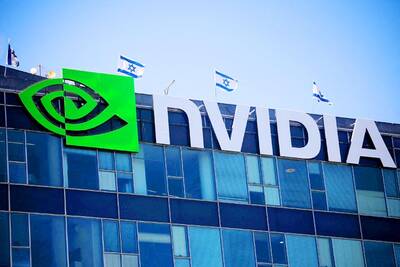Elan Microelectronics Corp (義隆電子) and Apple Inc have agreed to put an end to all patent-infringement litigation against each other and to cross-license patents related to multi-point touch panel technology.
Elan, a Taiwanese manufacturer of chips and touch screens, said it and the US maker of the popular iPod, iPhone, iPad and MacBook agreed to drop all pending patent lawsuits on multi-touch technology, according to a stock exchange filing yesterday.
Elan declined to disclose the details of the settlement, citing confidentiality. However, the Taiwanese company said Apple had agreed to pay US$5 million as part of the settlement, according to the filing.
Shares of Elan rose 1.57 percent to NT$25.85 on the Taiwan Stock Exchange, before the company’s announcement of the litigation settlement.
The settlement, which took effect on Tuesday, ends more than two years of disputes between Elan and Apple over multi-point touch technology patents.
In April 2009, Elan filed a lawsuit against Apple in the Northern District Court of California, alleging the US company’s products infringed its US patent Nos. 5,825,352 and 7,274,353. Apple countered in July 2010 by accusing Elan of infringing its US patent Nos. 5,764,218, 7,495,659 and 6,933,929. However, the US company withdrew its complaint against Elan over US patent No. 6,933,929 in May 2010.
In March 2010, Elan filed a complaint against Apple with the US International Trade Commission (ITC), alleging the US company’s products, including the iPhone, iPod Touch, iPad and MacBook, infringed its US patent No. 5,825,352.
The ITC started probing Elan’s complaint in April 2010, but ruled in favor of Apple in late June last year, saying Elan failed to show that Apple products infringed its patents.
While the ITC ruling has no binding effect on district courts, the two companies decided to drop the litigation at the California district court, which was scheduled to open on Feb. 27, and agreed to cross-license US patent Nos. 5,825,352; 7,274,353; 5,764,218; and 7,495,659, that were the subject of the dispute, according to yesterday’s filing.
Touch application made up about 30 percent of Elan’s gross revenue in 2010 and the company was on target to raise this to 50 percent last year, counting on rising demand from smartphone, tablet and laptop applications, the company said in April.
In the first 11 months of last year, the company’s consolidated revenue totaled NT$4.78 billion, down 15.14 percent year-on-year. Elan has yet to release its consolidated sales for last month, but yesterday reported that unconsolidated sales reached NT$421.9 million, which represents an increase of 11.33 percent from a year earlier.
For the whole of last year, the company’s unconsolidated revenue totaled NT$5.2 billion, down 13.47 percent from 2010, the company said in a separate exchange filing.

Shares in Taiwan closed at a new high yesterday, the first trading day of the new year, as contract chipmaker Taiwan Semiconductor Manufacturing Co (TSMC, 台積電) continued to break records amid an artificial intelligence (AI) boom, dealers said. The TAIEX closed up 386.21 points, or 1.33 percent, at 29,349.81, with turnover totaling NT$648.844 billion (US$20.65 billion). “Judging from a stronger Taiwan dollar against the US dollar, I think foreign institutional investors returned from the holidays and brought funds into the local market,” Concord Securities Co (康和證券) analyst Kerry Huang (黃志祺) said. “Foreign investors just rebuilt their positions with TSMC as their top target,

REVENUE PERFORMANCE: Cloud and network products, and electronic components saw strong increases, while smart consumer electronics and computing products fell Hon Hai Precision Industry Co (鴻海精密) yesterday posted 26.51 percent quarterly growth in revenue for last quarter to NT$2.6 trillion (US$82.44 billion), the strongest on record for the period and above expectations, but the company forecast a slight revenue dip this quarter due to seasonal factors. On an annual basis, revenue last quarter grew 22.07 percent, the company said. Analysts on average estimated about NT$2.4 trillion increase. Hon Hai, which assembles servers for Nvidia Corp and iPhones for Apple Inc, is expanding its capacity in the US, adding artificial intelligence (AI) server production in Wisconsin and Texas, where it operates established campuses. This

H200 CHIPS: A source said that Nvidia has asked the Taiwanese company to begin production of additional chips and work is expected to start in the second quarter Nvidia Corp is scrambling to meet demand for its H200 artificial intelligence (AI) chips from Chinese technology companies and has approached contract manufacturer Taiwan Semiconductor Manufacturing Co (TSMC, 台積電) to ramp up production, sources said. Chinese technology companies have placed orders for more than 2 million H200 chips for this year, while Nvidia holds just 700,000 units in stock, two of the people said. The exact additional volume Nvidia intends to order from TSMC remains unclear, they said. A third source said that Nvidia has asked TSMC to begin production of the additional chips and work is expected to start in the second

US President Donald Trump on Friday blocked US photonics firm HieFo Corp’s US$3 million acquisition of assets in New Jersey-based aerospace and defense specialist Emcore Corp, citing national security and China-related concerns. In an order released by the White House, Trump said HieFo was “controlled by a citizen of the People’s Republic of China” and that its 2024 acquisition of Emcore’s businesses led the US president to believe that it might “take action that threatens to impair the national security of the United States.” The order did not name the person or detail Trump’s concerns. “The Transaction is hereby prohibited,”